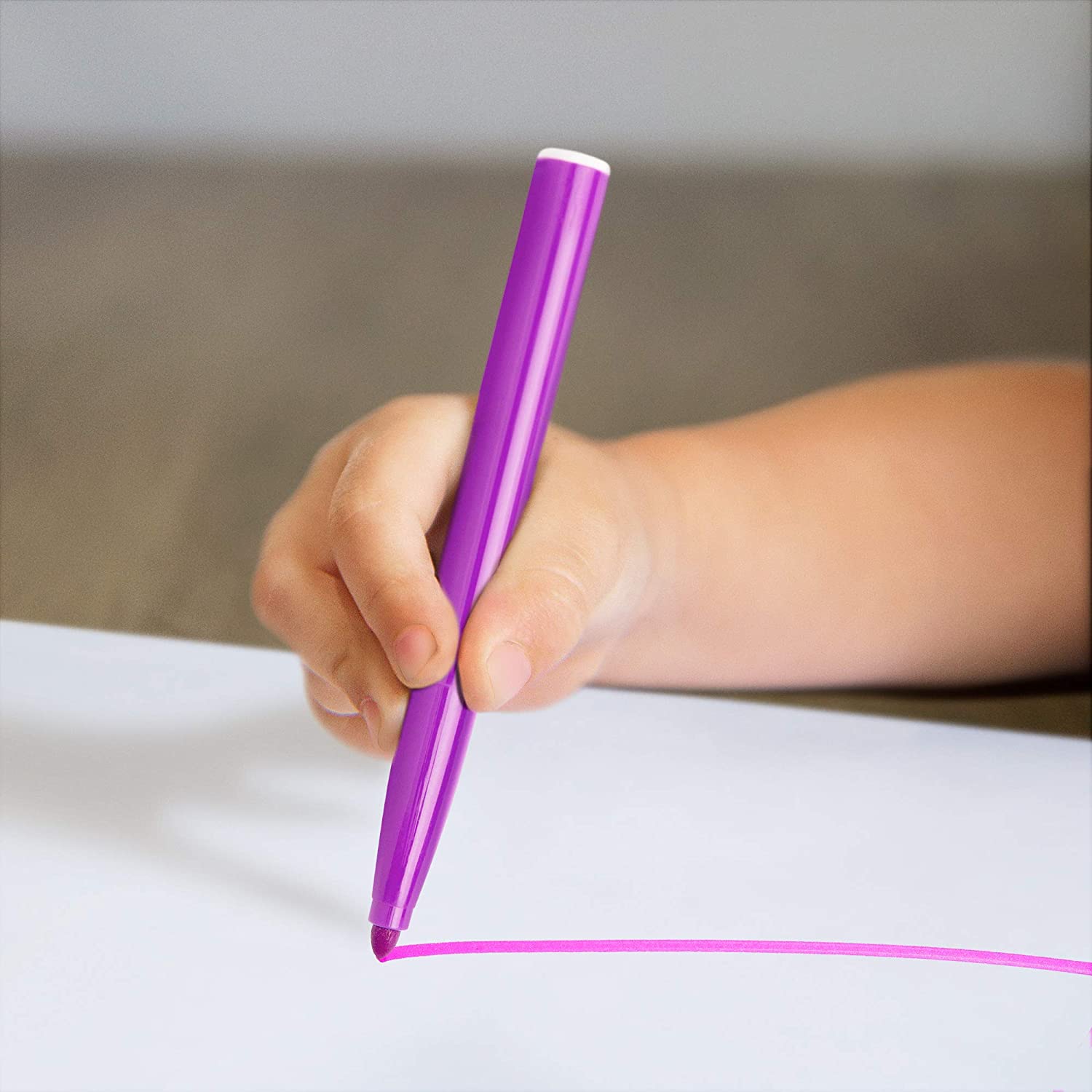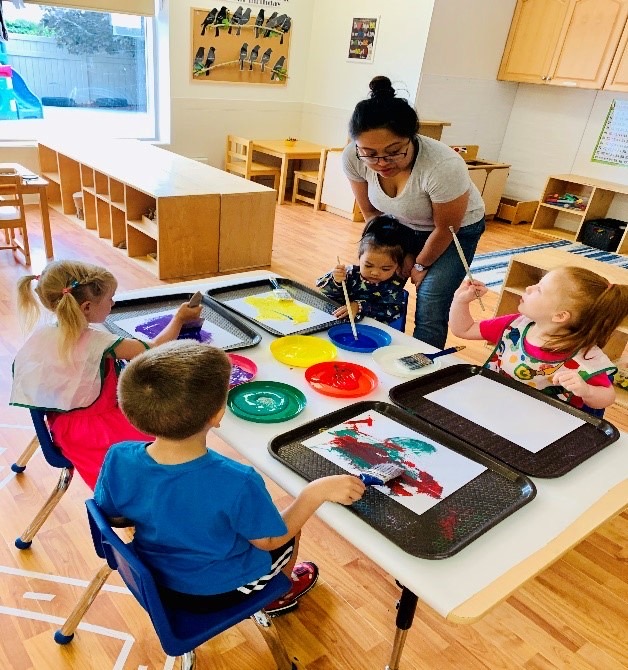Goal setting for Kids: Turn a wish into a goal
GOAL SETTING FOR KIDS:
5 SIMPLE STEPS TO TURN A WISH INTO A GOAL
We all love to dream! In the beloved fairy tale, Cinderella said, “A Dream is a wish your heart makes” but what if we want to turn those wishes into reality. How can we teach our kids to do that? We can teach them to set goals. A goal is like magically turning that dream into reality by setting an intention to achieve that very wish. Teaching children the difference between a wish and a goal is essential and will help your child become a goal-oriented and mindful individual. Here’s 5 simple steps to turn a wish into a goal:

You will need:
• A wish to cultivate from a young dreamer
• Fairy tale movies or books
• A marker
• paper
Learning outcomes
• Language and literacy
• Fine motor
• Self awareness
• Problem solving and troubleshooting
• Self esteem
• Exploring strategic planning
Step 1
MANAGE POSITIVE OUTCOMES
Brainstorm with your child on a possible wishes that can become goals. Be realistic and both age and developmentally appropriate. By doing this, you will set them up for success and they will not give up on goal setting.
When helping your child set a goal or put a dream in motion:
• Take your time
• Keep it simple!
• Play along and make a goal of your own
• Acknowledge each idea and use open ended and encouraging language and tone.
• Do not discourage but set aside goals that may not be attainable right away i.e. Driving a car

Step 2
REMOVE THE MAGIC WAND!
Help children understand there is nothing wrong with having a wish. But waiting for a wish to come true is unrealistic unless of course you have a little “Bibbidi Bobbidi Boo” magic up your sleeve.
• Show your child examples of how people make their wishes come true through action.
• Explore some fairy tale books or videos where this is evident.
• Have fun with this!
Step 3
ENGAGE & EXPLORE
At the start of a brand-new year, we often set resolutions for ourselves but often do not create an action plan to achieve those goals. We need to replace the word “wish” with an intention. Use an action word that will help to accomplish the goal.
• introduce … Action words!
• Set intentions.
• Try to help your child imagine what it will be like when the goal is met with success. How will they feel?

Step 4
INTRODUCE THE MAGIC OF COMMITTING GOALS TO PAPER
It is indisputable that committing our goals to paper and reviewing them regularly gives us a higher chance of achieving them.
• Write the child’s intentions down on paper. You can also cut out pictures and paste them on the paper so that you have a visual of the goal in addition to the words.
• Make a plan of action and answer the questions: Who, what, where, when and why. Knowing why you want something plays a big part in motivation. And more importantly HOW? There may be many HOW’s in the process of getting to one’s goal.
• Help your child set a deadline by asking them how long they think it will take them to achieve their goal.
• Set a reminder on a digital device or calendar with the deadline.
Step 5
• Acknowledge
• Support
• Praise
Remember to do this at every step along the way. A goal isn’t achieved in one day. It takes time and usually a lot of little steps to make it happen. Celebrate those little achievements along the way!
How to Help an Extreme Picky Eater: 6 Simple Steps
How to Help an Extreme Picky Eater: 6 Simple Steps
Parents often ask us for strategies and tips to help with a picky eater. Many children go through phases when they become picky about what they would like to eat. It’s usually a sign that they are growing in independence, but I’m sure we can all agree that it can be very frustrating! After all, as parents and educators, we just want to make sure that our little kiddos are getting enough nutrition.
These 6 tips on how to help an extreme picky eater might feel like a lot if you’re just getting started. Instead of trying to tackle them all at once, identify just one area to start before moving on to the next.
1.Watch what you say
“Picky” might be an okay word to describe the trends you’re noticing with your child’s eating, but it’s not a description we want your child to internalize. If your child comes to learn that they are viewed as “picky”, it’s more likely that they will continue to demonstrate picky habits.
Instead of using the word “picky eater” to describe how they eat, try to empower your child and help them adopt a growth mindset when it comes to their eating.
2. Adjust your expectations
You’re going to be working HARD on helping your extreme picky eater. You will be putting in a lot of thought, effort, and time. That is AMAZING! Your child is lucky to have a parent who wants to make eating easier for them!
The thing is, your child is eating the way they do for a reason. Often there is no quick fix. Even when you’re doing everything right it can still take a while for your child to feel comfortable trying new foods.
This is for a few reasons.
First, your child likely has a lot of practice eating the way they do. Their eating choices have become a habit. It can take a while for them to learn that they can comfortably and confidently eat a variety of new foods.
Second, average young eaters need around a dozen exposures to a new food before they decide to eat it. Extreme picky eaters might need twice or more exposures before feeling ready to eat. That’s a lot of time and effort on your part!
Be patient and persistent. Don’t assume that just because something you tried a few times hasn’t worked YET that it won’t work at all.
I’m sure you’ve heard the saying that the definition of crazy is doing the same thing over and over while expecting different results. Ignore that! This is one situation where you want to keep trying!
3. Regularly serve new foods
Regularly serve your child new foods – even if they don’t eat them, even if they never eat them.
Serving your child new foods sends the message that they can eat new foods. It also gives your child the opportunity to try new foods when they are ready.
Ideally the new food can be on your child’s plate along with the rest of their meal. If they are uncomfortable having a new food on their plate, they can move it next to their plate.
4. Build their comfort
Most extremely picky eaters have strong food aversions and anxiety about eating new foods.
We want to break down your child’s reservations and instead help them feel empowered and capable when it comes to trying new foods.
Find out what motivates and interests your child. It might be cooking, learning about food in books or on TV shows, playing with food, doing arts and crafts, experimenting, or grocery shopping.
5. Create consistency with mealtimes
If there’s one thing I’ve learned in my work with extremely picky eaters it’s that they have a lot of anxiety when it comes to meals and anything related to eating. To help make this more comfortable for skeptical eaters, it’s helpful to create consistency with mealtimes.
Think about meal timing and everything that happens before, during, and after meals. Being consistent with meal times allows your child’s appetite to regulate and build so they can come to the table hungry and ready to eat. Being consistent with the mealtime routine helps your child know what to expect. Both can make eating easier and increase success when introducing new foods.
6. Don’t freak out
As a parent, I know how stressful it is when your child won’t eat. The thing is, getting upset about it doesn’t help your child. In fact, it can make eating even harder for them. Kids sense our stress and that’s the last thing we want at the table. Our anxiety feeds theirs. Our stress leads to their stress, and stress suppresses the appetite. That doesn’t make eating easier!
The best thing you can do for your child is help them feel calm, comfortable and confident at mealtimes. That starts with you!
For more information about our Four Pillars of Learning curriculum which includes Physical Activity and Nutrition, click here.
The Canada Food Guide is a great resource to help with picky eating.
Halloween 2020 – The spookiest one yet! TO TRICK-OR-TREAT OR NOT?
Halloween 2020 -The Spookiest one yet! TO TRICK-OR-TREAT OR NOT TO TRICK-OR-TREAT?
Holidays help us maintain our sense of rituals and ‘normalcy’ during a not-so normal time, but since March 2020, we have had to find new ways to celebrate holidays, traditions and spec ial occasions. Will blowing out birthday candles or bobbing for apples become a thing of the past? What about trick-or-treating?
As we approach Halloween 2020, there are diverse views on whether trick-or-treating should happen this year. Some argue that cancelling the holiday would be a major economic disruption to a billion-dollar industry in a time when the economy has suffered due to COVID-19. While others ascertain that there are serious risks to health and safety involved in the activity of trick-or-treating that could lead us toward another shut down. Whether you agree with those that want to cancel or not, why not make the best of Halloween 2020 with the spookiest Halloween yet! We will share some fun Halloween ideas for both those that want to trick-or-treat and those that don’t.
For those that want to trick-or-treat, here’s some ideas to enjoy it in a safer way:
- Have children wear masks and gloves and make it a part of their costume.
- Leave baskets of candy on a table in the driveway so kids don’t need to come to the door or ring your doorbell.
- Create individual bags of candy that are easy to hand out. Ensure all candies are have a wrapper.
- Avoid gathering in large groups for trick or treating. Instead, keep the group to 2-4 kids.
- Create a fun atmosphere by decorating the outside of your home.
- If you are still not comfortable going out to a stranger’s home, you can trick-or-treat by going to family or friends’ homes only.
For those that want to explore other Halloween activities:
- Pumpkin carving/decorating contest – involve the whole family to see who can make the scariest/funniest pumpkin.
- Make Halloween play dough. Check our Facebook page for a great pumpkin spice play dough recipe.
- Go on a Halloween candy scavenger hunt! Click on this link to print one. https://heyletsmakestuff.com/printable-halloween-candy-scavenger-hunt/
- Decorate spooky cupcakes with Halloween candy.
- Have a Halloween dance party in your own home.
- Make a Halloween obstacle course. Here’s a link for a great spider lair obstacle course. https://www.chickenbabies.com/2011/10/lair-of-spider-queen.html
- Make a magic potion. Mix ingredients and learn some science too!
- Pumpkin-theme activities. Stay tuned for our next blog with lots of pumpkin-themed activities and ideas.
- Halloween Games – Stay tuned to future blogs this month with more Halloween games and activities.
As you can see, there are lots of ways to make 2020 an amazing Halloween – even if you are not trick-or-treating! We will be enjoying these and many more activities at Alpha’s Discovery Kids Preschool and Daycare! Happy Halloween!
The Benefits of Listening to Classical Music for Young Children
The Benefits of Listening to Classical Music for Young Children
Did you know that classical music is beneficial for young children? Here are 5 reasons why you should encourage listening to classical music with your little one!
Creates a Calming Effect
First and foremost, classical music has a calming effect. Many doctors recommend that woman listen to classical music during pregnancy for that very reason. When a baby is first born, playing classical style music, especially during naps, will help soothe and calm your little one! This is not just calming for infants, all young children and event adults tend to experience a sense of calm when listening to the sounds of classical music.
Improve Listening Skills
Listening to music from classical music composers such as Beethoven and Mozart at a young age, has been proven to increase concentration skills in many young children. Studies have also found that children who listen to those specific musicians are more self-disciplined.
Improve Brain Function
One of the most known benefits of listening to classical music is the increase of brain function. Classical music helps develop the genes that secrete dopamine and improves synaptic function.
Become a Fan of Classical Music
Most everything we do in life is based on the habits we have formed throughout our life, especially in the early years. Listening to classical music can become a habit for those who have always listened to it. So, start them young!
Improves Creativity
Classical music, in general, is very inspiring. Since the music improves brain functions, it also inspires new thoughts which helps one to become more creative!
In our classrooms, we play classical music melodies during our nap times to create a calm atmosphere. We also use music to inspire creative expression through art. We play classical music while children are painting or creating art.
For more information about the benefits of classical music, click here.
Minimize First Day of Kindergarten Jitters
Minimize First Day of Kindergarten Jitters
Minimize First Day of Kindergarten Jitters – By Susie Beghin
Every September a new wave of children is introduced to the Kindergarten classroom. This transition from home or daycare to the elementary school system can be easy and seamless when you take the right steps. There are many things parent and the daycare professionals can do to help ease the transition.
Preparedness for Kindergarten is not about the knowledge your child has—whether they can read, or even if they know their letters or numbers—it’s about how much independence and confidence they have and how well socialized they are. These key skills play a role in how well they might adapt to the classroom. Helping your child develop these characteristics can be accomplished at home and daycare leading up to the first day of school. But how can parents and caregivers do this?
At Alpha’s Discovery Kids we provide our families with a readiness checklist, but parents can develop their own, based on their child’s needs and abilities. There is a consensus amongst experts of five key things you can do to prepare your child for this important life event.
1. Encourage Self-Care
• Teach self-help skills like dressing—learning zippers and buttons, shoes and boots, coats, mittens.
• Teach them how to put things into, and take them out of, a backpack, and how to use all types of lunch containers. Teach them to tidy up their things and keep track of their belongings.
• Ensure your child is capable when addressing their bathroom needs. In Kindergarten they will not get assistance, and this could result in a child being sent home.
2. Follow regular routines
• Make sure there is a consistent bed time that provides your child with enough sleep to ensure they are attentive and productive in the classroom. In general, the consensus is 10 hours a night for Kindergarten-aged child.
• A regular morning routine is also critical. It is recommended you get your child used to waking up at the same time every day, getting dressed and eating breakfast, all with plenty of time before they have to be ready to leave for school without being rushed.
• Build free play time into your daily schedule, both with parent involvement and without. Individual playtime helps develop creativity and allows the child time to decompress without any expectations or influence from others.
• Part of having a routine is having a schedule and keeping it. At home it would be easy to give in if your child wants to dawdle through lunch. A school schedule is much more rigid, and if 30 minutes is allotted for eating, then that’s what they will get. Teach your child to transition from one activity to another when it is time. Continue reading “Minimize First Day of Kindergarten Jitters” below.
3. Encourage Socialization
• Register your kids in parent-free activities. Art classes, dance, and sports are all excellent opportunities to create a sense of independence and comfort. They will learn that their caregivers will always come back for them.
• Participation in team sports is a great way for children to learn cooperation and teamwork, which will really help them in a school setting, both in the classroom and on the playground.
• Children who regularly attend preschool and daycare are automatically socialized due to their group environment and don’t really need other types of group activities until Kindergarten.
4. Develop healthy habits
• Eat healthy foods. Teach your children about the difference between healthy food and treats (sometimes food).
• Start the day off with a healthy breakfast to make your child is alert and ready for learning.
• Drink lots of water to keep the brain and body hydrated to optimize learning. Keep fruit juice as a sometimes food, and minimize soda consumption as much as possible.
• Get plenty of sleep. Experts recommend 10 hours of sleep a night, but if your child needs a nap to recharge when they get home from Kindergarten, especially in the early months, don’t discourage them. If the nap interferes with their ability to get to sleep at night, limit the length of the nap.
• Make sure your child has regular physical examinations and is up to date with their immunizations. Remember, many school systems will suspend attendance if the immunization record is not up to date.
5. Talk to your child about Kindergarten
• Visit the school. Take advantage of all events offered that allow you to bring your child to the school—open houses, Meet the Teacher events, and orientation sessions.
• Travel the route your child will be taking to school, whether they’re walking, driving, or taking the school bus. If you’re walking, learn how long it will take you to get to school, and plan that into your routine. Give your child the opportunity in advance to look at all the interesting things along the route so they will be less distracted when school actually starts. If taking the school bus, drive the route with them so they can develop familiarity with their surroundings and will be able to recognize landmarks when they are nearing their bus stop. Talk about school bus safety—staying seated when the bus is moving, keeping track of their belongings, and only leaving the bus stop with their designated caregiver.
• Take them to the school to play in the playground. Learn some playground games like hopscotch or Four Square so they will not feel lost or overwhelmed during those first few recesses.
• There are some really good books you can borrow from your local library that explore the kindergarten transition. Read them with your child and encourage them to ask questions.
Parents also have expectations of their child when entering Kindergarten, but it’s important to remember that all children reach milestones at different times and not to measure your child against anyone else. It doesn’t matter if your 4 year old can’t read yet. Work with them at home to support their preschool’s efforts, learning letters, numbers, colours, and shapes.
Whether a child has stayed home with parents or other caregivers or has attended a daycare or preschool, there are steps you can take to lessen your child’s anxieties related to starting school. Following these suggestions will help ease the transition into the structured, often overwhelming world of kindergarten. With love and support, everything will be fine for everyone involved.
Thanks for reading: Minimize First Day Of Kindergarten Jitters
Thanks for reading: Minimize First Day of Kindergarten Jitters
How to Get Kids to Sleep: The Benefits of a Positive Bedtime Routine
How to Get Kids to Sleep
How to Get Kids to Sleep – Children thrive on having a routine and as we all know, bedtime is no exception! A consistent and positive bedtime routine can assist with your child quieting down, understanding bedtime is near and having a good quality sleep. Read more ›






